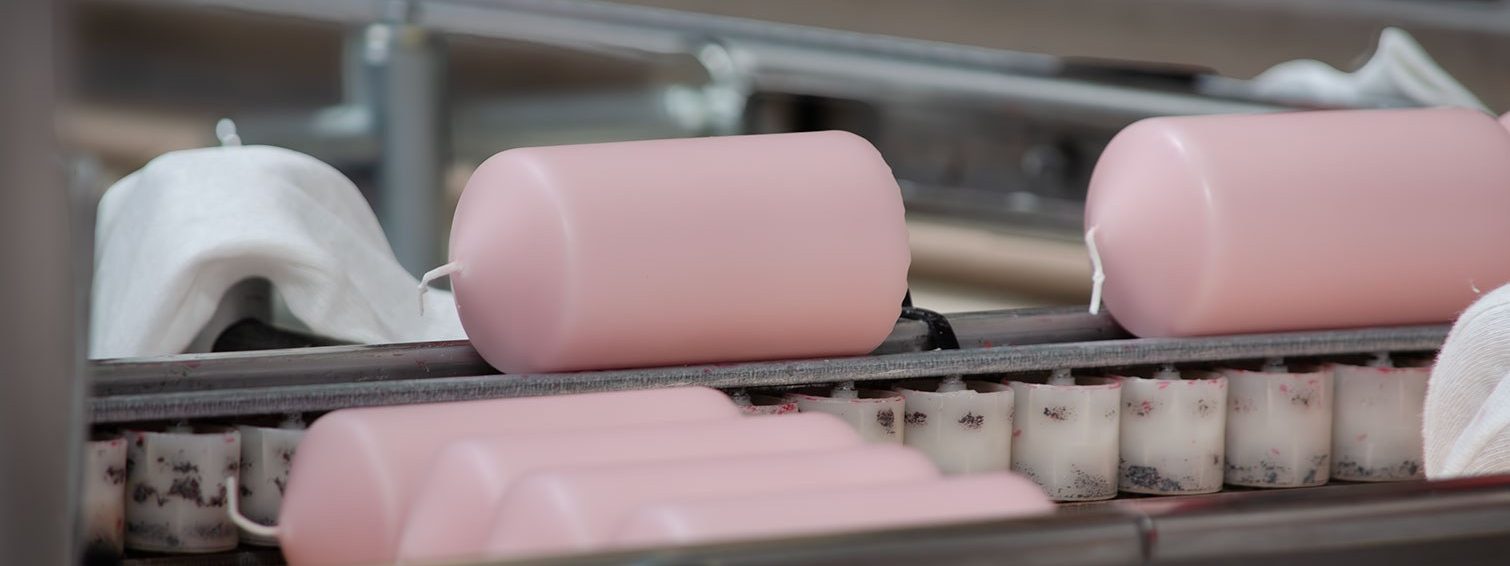Meaning and history of the candle
candle knowledge

THE HISTORY OF CANDLES
As early as in the 3rd century B.C., people had candle-like light sources made of fat and sebum. In the Middle Ages, many wealthy people lit their houses with beeswax candles. It was not until the 19th century that chemists discovered the raw materials paraffin and stearin, which are still used in candle production today. The history of the candle had a decisive influence on daily life. With the invention of the light bulb in 1879, candle production temporarily lost importance. Today the candle is no longer a necessary item of daily use, but it has regained importance through history. Today, candles are used as decoration articles, as mood setters and as a popular gift
The invention of the candle
Already in the 3rd century B.C. the burning properties of waxes and fats were known and used. Long before the history of the candle, oil-fuelled traffic lights and small lamps were used for lighting. On historical pictures and in old texts it cannot be seen exactly whether candles were really depicted or described or whether it have been a kind of wax torches which were used in the 3rd century BC. These lamps consisted of straw, hemp or reed, which was soaked in fat, tallow or resin. It is assumed that it was only after Christ that a real candle was created without a vessel.
Beeswax candles in the Middle Ages
A significant improvement took place in the Middle Ages, when candles made of beeswax appeared in Europe. During the Roman Empire (2nd century A.D.), low candles of beeswax were so developed that they could burn indoors without excessive smoke and a strong smell.
The customs of Christianity helped to spread the candle throughout history. Since the second half of the 4th century A.D. candles were used for religious rituals and purposes. Above all, the needs of the Christian church led to beeswax as a raw material for candles becoming an important commodity in history. In the Middle Ages, candle technology developed mainly on the basis of beeswax. However, as this was an expensive raw material with limited availability, these candles were mainly reserved for the clergy and the princely houses. Ordinary citizens continue to use tallow candles at this time. These were made from beef kidney fat or mutton fat. These candles caused a rancid smell and smoked and rusted accordingly. Only at the end of the 15th century did beeswax candles find their way into the homes of wealthy citizens.
Striving for white candles
In the 17th century the tallow candles were mixed with arsenic to produce white candles. As a result, however, people were poisoned. With the discovery of the spermaceti (extracted from the oil of the cranial bone of the pot whale) brilliant white candles could be produced. In the 18th century, the "candle century", candles were lavishly used at princely courts, court festivals and coronations.
PARAFFIN AND STEARIN - NEW CANDLE RAW MATERIALS IN THE 19TH CENTURY
It took until the middle of the 19th century before stearin and paraffin were discovered as further high-quality raw materials for candle production. Around 1820, the French chemist Eugène Chevreul discovered how fatty acids can be obtained from animal fats. This led to the development of stearin, which was hard, non-perishable and burned cleanly.
Paraffin was discovered in 1850 after chemists found out how the naturally occurring waxy substance can be efficiently separated from crude oil and processed. The odourless, bluish-white coloured paraffin was a blessing for candle production, as it burned cleanly and evenly and was cheaper to produce than all other candle fuels. In the same period of time as the discovery of new raw materials, decisive improvements of the wick were made, especially its braiding and chemical preparation.
This created further conditions for well-burning candles and Goethe's dream "wouldn't know what they could invent better than that the lights burn without wick" came true.
CANDLES - CULTURAL AND RELIGIOUS SIGNIFICANCE
In many cultures, lighting a candle has an important significance and tradition in religious rituals. For centuries, culture has played an important role in many festive and contemplative occasions.
The religious significance of candles in Christianity
Candles have a great religious significance in Christianity, for example a burning candle symbolises - not only in this religion - the soul that shines in the dark realm of death. By lighting the Easter candle the resurrection, i.e. Jesus' triumph over death, is symbolised in Christianity.
CANDLE TRADITIONS UNTIL TODAY
The myth of the candle and its cultural significance have remained unchanged until today, although since the introduction of electric light we have a wide variety of different lighting fixtures at our disposal. The festively laid table, the cosy coffee party and romantic-atmospheric hours are still mostly connected with the light of a candle.
A significant improvement took place in the Middle Ages, when candles made of beeswax appeared in Europe. During the Roman Empire (2nd century A.D.), low candles of beeswax were so developed that they could burn indoors without excessive smoke and a strong smell.